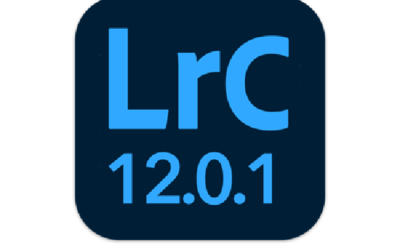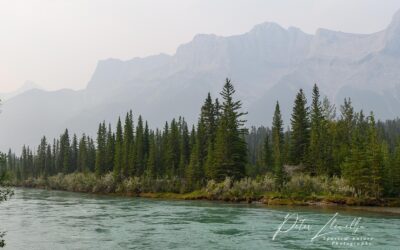Now I am getting back into ‘photo mode’ from ‘management mode’ I am looking at the various software upgrades that have happened along the way. Anyone who has been on one of my workshops or follows the blog will know that in the main my digital workflow revolves around three main products.
- PHOTOMECHANIC – (www.camerabits.com) – The primary tool for sorting, captioning, and re-numbering all of my digital files. While I have been in London version 5 has arrived and I am just beginning to get to terms with the slightly changed interface. The main reason for my choice of Photomechanic are it’s speed, ease of use, batch processing ability and perhaps most of all, the convenience of code replacements to aid the rapid captioning of hundreds or even thousands of images from a shoot. So what’s new in version 5?
- A new look – the new interface has a more modern feel to it and has many more customization options to tailor it the way you want
- Cropping withing the program can be rotated to any angle and is compatible with Adobe products crop tools so any crop in Photomechanic will now be reflected in an Adobe product.
- Many new IPTC/EXIF fields are now available
- Movies can be viewed (Mac version only)
- The Preview window can now be opened and remain open whilst still viewing the contact sheet – great for a dual monitor set up such as I use in the office.
One of the main reasons behind the new release is that it will integrate into the new cataloging software that Camerabits will shortly (I hope!) release. This promised software will offer dully searchable cataloging/databasing of your complete image collection and perhaps most importantly will be multi-user and offer a remote interface allowing one to contact and administer the catalog from any internet connection. For a travelling photographer such as myself this would offer huge advantages.
- APPLE APERTURE – (www.apple.com) – Once the images are sorted, captioned and keyworded the RAW files are imported into Aperture which is currently my primary raw image processor, JPEG exporter, and database program. Currently at version 3.3 Apple is needing to pull it’s socks up if it wants to retain the professional and advanced amateur market place! Did you notice that Photomechanic is going to have a database soon? Well one of the main reasons I use Aperture is it’s database so if i can perform that function from within Photomechanic than I have to question what else I am using Aperture for and does it do things better than the competition? More on that shortly.
- ADOBE PHOTOSHOP – (www.adobe.com) The third product I use is of course Adobe Photoshop. There are just some things that cannot be done any other way, including accurate crops, preparing images for the web sites, sharpening (yes I know Aperture does that as well but frankly the latest version of Photoshop does it better), and anything that requires complex masking or major image manipulation.
On occasion I also use Nikon Capture NX2, a product that I used to hate, but which Nikon have been steadily improving.
Each different raw process produces it’s own distinct look to the same raw image and everyone has their own personal preferences. You need to take time to learn the nuances of your software and how you can best manipulate the image to produce the look you want. One of the main issues for me is how long does it take to get to where I want to go? This may lead me to adopt a different practice depending on what I am shooting and the urgency with which it is required For example a wildlife shoot usually allows me to take time to process the images whereas a sports shoot is done under high pressure and speed of getting the images to my client is everything. This is one reason I am now adapting my sports shooting to capturing both a high quality JPEG and a RAW file simultaneously so that if necessary I can transmit he JPEG immediately and follow up with a raw conversion if necessary. I generally then keep the RAW files to be put into the database as these will always offer the highest quality attainable.
Take a look at the three images below and decide which version you like best. They are all an unmodified (i.e. I have done no additional work on these images) versions interpreted by the converter for each program. All images were then re-sized to fit the blog page using Photoshop to crop the converted JPEG.
As you can see there are some distinct difference. The Nikon Capture version offers a more neutral tone and perhaps the best skin tones. The Photoshop version is much warmer whilst the Aperture version probably offers the truest blue of the track at the Olympic velodrome. Of course these images were shot under artificial light.
This time let’s take a look at three images taken under natural light.
This time I think the differences are even more apparent. The Aperture conversion shows warmer colour tones and mush more detail is apparent in the sand. The Capture version is even better, yet more sand detail is apparent with the most natural sky colour, and the Photoshop version is the weakest from every aspect. Compared to the other two it looks washed out and lacking in ‘punch’ with some considerable loss of detail. It is therefore a matter of which file will require the least additional work, and therefore the least time, to get it to look how I wish. The less time I need to spend working on a file the better as far as i am concerned.
So, the question is, where does the future of my image processing lay, and will I need to re-write the Digital Workflow E-book available from this web site?
I think the answer to a great extent will lie with how good the forthcoming database tool will be in Photomechanic. If it is all that they promise, and I had some long discussions with their development staff in the Main Press Centre at the Olympics, then yes, I think there are some major changes coming. If I can ingest my images from the memory cards, sort, caption, keyword and then database from within a single program that also has the ability to transmit selected images to both my clients and the online database (powered by Photoshelter) then I seriously need to re-think how I process my RAW files.
Should I use Photoshop? Well, as stated above the latest version of Photoshop performs some tasks that I still need. The problem is that I am not a great fan of the way Photoshop’s raw converter processes Nikon files as shown above.
Should I use Nikon Capture? I am slowly coming around to this program, although of course Nikon are a great camera manufacturer and not primarily a software company. But, I am sure that Nikon’s engineers know more about Nikon’s raw file format that anyone else.
Should I use something else entirely? There are other raw converters out there and I have tried many of them, but so far nothing has blown me away.
You will notice that I have not mentioned Adobe Lightroom anywhere above. Mainly because Lightroom performs most of the same tasks as Apple’s Aperture, and although I cover the use of both products in ‘Digital Workflow for the Working Photographer’ I currently have a personal preference for Aperture. Incidentally Lightroom uses the exact same raw converter as Photoshop so there is no difference to be had there.
Watch this space as they say and I will keep you updated as things progress, but the big wait is on Camerabits producing their database solution.
I would value opinions and comments on this post.







